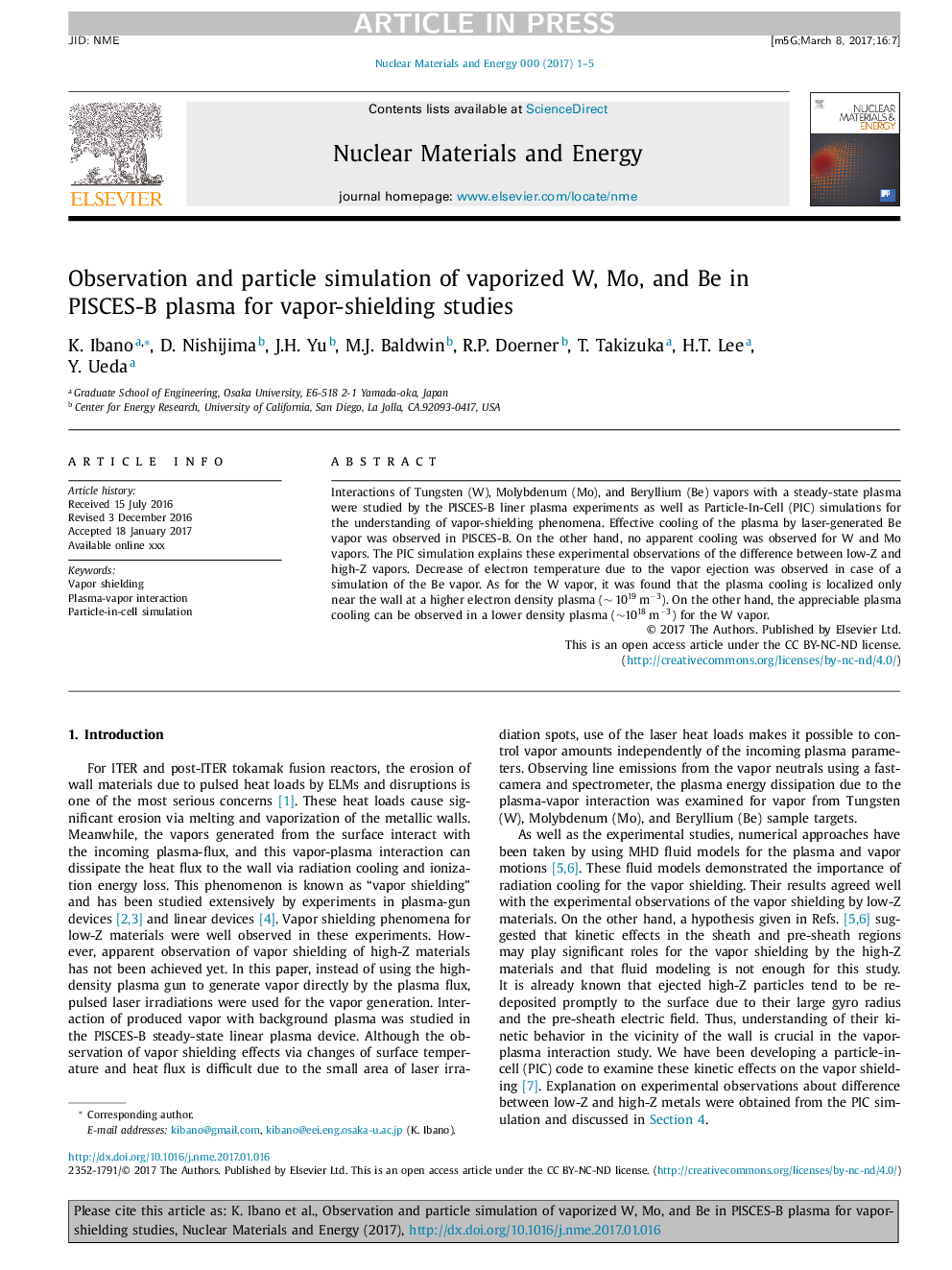| Article ID | Journal | Published Year | Pages | File Type |
|---|---|---|---|---|
| 7987454 | Nuclear Materials and Energy | 2017 | 5 Pages |
Abstract
Interactions of Tungsten (W), Molybdenum (Mo), and Beryllium (Be) vapors with a steady-state plasma were studied by the PISCES-B liner plasma experiments as well as Particle-In-Cell (PIC) simulations for the understanding of vapor-shielding phenomena. Effective cooling of the plasma by laser-generated Be vapor was observed in PISCES-B. On the other hand, no apparent cooling was observed for W and Mo vapors. The PIC simulation explains these experimental observations of the difference between low-Z and high-Z vapors. Decrease of electron temperature due to the vapor ejection was observed in case of a simulation of the Be vapor. As for the W vapor, it was found that the plasma cooling is localized only near the wall at a higher electron density plasma (â¼Â 1019 mâ3). On the other hand, the appreciable plasma cooling can be observed in a lower density plasma (â¼1018 mâ3) for the W vapor.
Keywords
Related Topics
Physical Sciences and Engineering
Energy
Nuclear Energy and Engineering
Authors
K. Ibano, D. Nishijima, J.H. Yu, M.J. Baldwin, R.P. Doerner, T. Takizuka, H.T. Lee, Y. Ueda,
